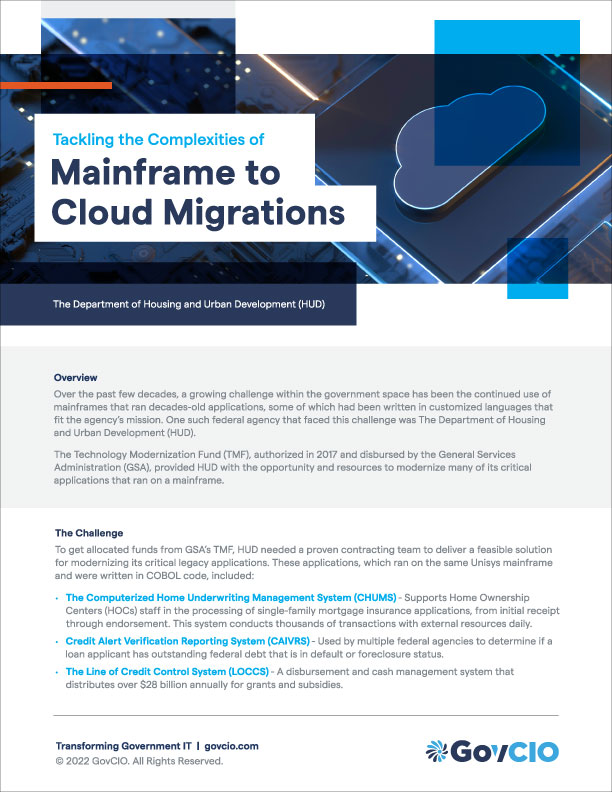
In stark contrast to its 2021 numbers, the US Federal Government expects to end this fiscal year (2022) with a surplus of $308 billion dollars according to the Congressional Budget Office. (As opposed to last year’s $226 billion deficit.) While that excess fuels clickable headlines for politicians, it’s not great news if your agency or department uses less budget than you predicted—while possibly falling short of longer term goals such as software modernization.
“Use it, or lose it” is a real thing that has caused Federal Government agencies and departments to lose or cut over $127 billion between 2009 and 2019. In one stark example from 2019, the Department of Defense had to return $80 billion in unused budget.
![]()
The average amount of budget fund cancelation is about 1.6% annually.”
According to the Government Accountability Office, the average amount of budget fund cancelation is about 1.6% annually. While that number doesn’t sound large, it can have an erosive effect on your budget and create a downward trend that can be more difficult to reverse down the road when increases could be genuinely needed. And while the examples above are government figures, the principle is the same in the private sector—or even more tightly policed.
So, what can you do as we near the end of your fiscal year if you find yourself with that ugly surplus—even of a measly one or two percent or less? We’ve got four suggestions for you:
1. NOTCH YOUR ARROWS FOR NEXT YEAR
Take some time to cast ahead to your fiscal 2023 strategy. What updates and improvements would you like to see by the end of next year?

Knowing that you have money in your coffers ahead of time, consider what additional resources, technology, or assistance will help you achieve those goals. Are there moderate investments such as modernization planning that you can make this year that could give you wiggle room should the vagaries of budget and crisis change your situation next year? Are there plans you’d like to lock in now?
As you envision what next year should look like, consider software modernization. One smart use of funds ahead of a modernization project is using the final couple of months of this year to get an assessment for your program. It only took TSRI six weeks to assess the entire AT&T billing system with 961,780 lines of code and comments through our JANUS Studio®, delivering an Application Blueprint® that enabled them to begin the next phases of their modernization more efficiently.
![]()
It only took TSRI six weeks to assess the entire AT&T billing system with 961,780 lines of code.”
2. UPSKILL YOUR TEAM
Professional development does more than grow your organizational toolkit of capabilities; it also helps employee retention during a time of 3.5% unemployment.

In a fascinating 2022 learning and development study, LinkedIn found that the #1 driver of workplace culture (and so, retention) is opportunities to learn and grow. And in a time where languages like COBOL and Ada don’t even rank in the top ten searched languages, training in modern languages can also pay off for your organization. In a Microsoft-sponsored study, IDC found that IT professionals who have achieved a relevant role-based technical certification perform on average 26% better than their uncertified colleagues with the same responsibilities. Certifying your people is worth the investment.
3. UPGRADE YOUR TECHNOLOGY
If you have money left over, it’s a great time to provide your teams with technology that matches both the needs of a more mobile, more connected, and more secure world.

These can be affordable, pointed investments that can pay off with increased productivity, security, and employee satisfaction while positioning your teams to face changing needs. As you consider your options, think in terms of:
Mobility: More powerful and secure laptops and tablets
Business processes: Point of sale for retail, connected medical devices
Cloud computing: New as-a-Service applications, storage devices, and subscriptions
Cybersecurity: Assess and upgrade your current measures
Automation: Software, AI, and services to automate large, repetitive, or formerly impossible tasks
Let’s talk about that last one.
4. GET A FIRM HANDLE ON YOUR CURRENT CODE
Even if you’re not planning on modernizing code, poorly written or undocumented applications that are written in hard-to-understand languages can be a huge IT operating expense for you.

A Harris poll found that developers spend an average of 17 hours a week (42% of their time) dealing with bad code. Basic understanding of code content should be a prerequisite for any software-managing organization: know what’s there. But with millions, or tens of millions of lines of code, that can be very difficult or impossible to do manually.
![]()
Developers spend an average of 17 hours a week (42% of their time) dealing with bad code.”
That’s where TSRI DocsRev makes a powerful investment in all 365 days of 2023—and beyond.
DocsRev is automated code documentation-as-a-Service. It allows users with varying experience levels to quickly familiarize themselves with the structure and flow of the application through easily navigable diagrams, hyperlinking code, and other UML artifacts and graphics. It’s powered by the same automated tools our clients have trusted to document the world’s most critical applications since 1995. Now our technology is available to you as a simply-priced and easy-to-manage service that keeps you up to date on what’s really in your code.
In addition to giving you always-current code documentation, DocsRev apprises you on your application's current complexity, structure, control flow, data flow, similarity, and dead code. All you need to do is upload your latest code baseline to receive complete and detailed documentation.
Trusted by major organizations around the world for application maintenance and development, DocsRev frees you from uncertainty by letting you easily inspect and identify external calls, utilities, and interfaces. DocsRev shows you what your code is actually up to by automatically exposing EXEC statements your application is using such as SQL, CICS, and more.
Let’s Make Your 2023 Budget Process Go Smoothly
Throughout next year and beyond, your code will change based on your needs. To make sure you have the right views into whatever happens in your code, the DocsRev team is continually adding new views, graphs, indices, diagrams, and other features to its documentation set.
---
Proven by Decades of Results. Prove It for Yourself.
For decades, TSRI clients have been discovering a dramatically faster, more accurate, and less expensive AI-based and automated modernization process. We’ve earned a place as the go-to resource for enterprise corporations, government, military, healthcare, and more. Now prove it for yourself. Find out how the proprietary TSRI modernization process delivers future-ready, cloud-based code in any modern language in a fraction of the time.
See Case Studies
Learn About Our Technology
Get Started on Your Modernization Journey Today!











 Modernization of High Value Assets (HVAs) and software systems is more urgent than ever. In the past year, tens of millions of U.S. citizens have leveraged critical online systems to manage their livelihood and health during the COVID-19 pandemic. With such a heavy reliance on these systems, now is the time for the federal government’s critically important HVAs systems to keep up with citizens’ growing needs.
Modernization of High Value Assets (HVAs) and software systems is more urgent than ever. In the past year, tens of millions of U.S. citizens have leveraged critical online systems to manage their livelihood and health during the COVID-19 pandemic. With such a heavy reliance on these systems, now is the time for the federal government’s critically important HVAs systems to keep up with citizens’ growing needs.